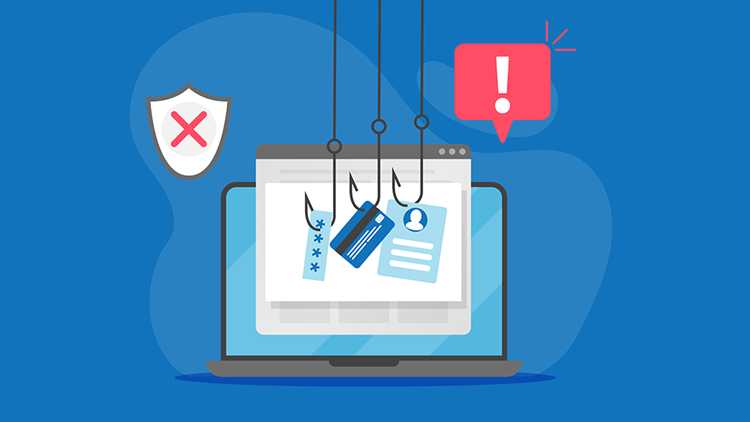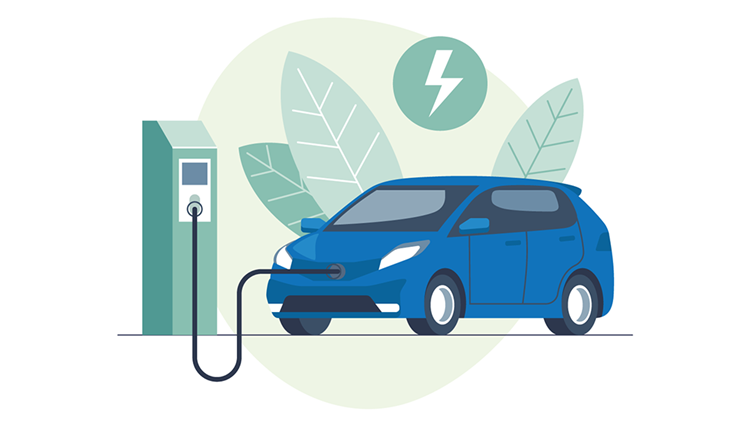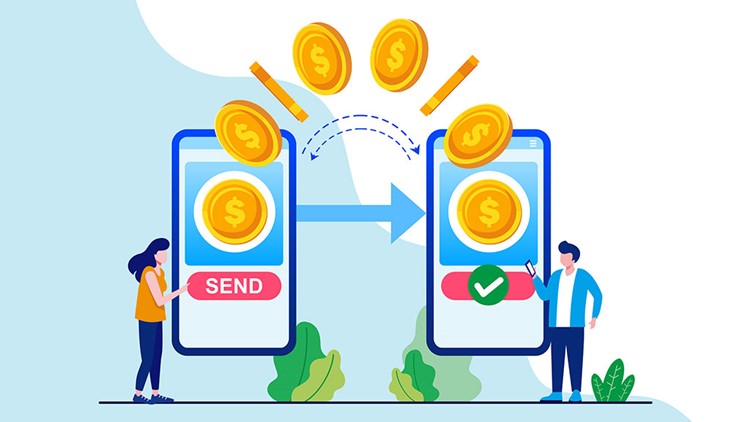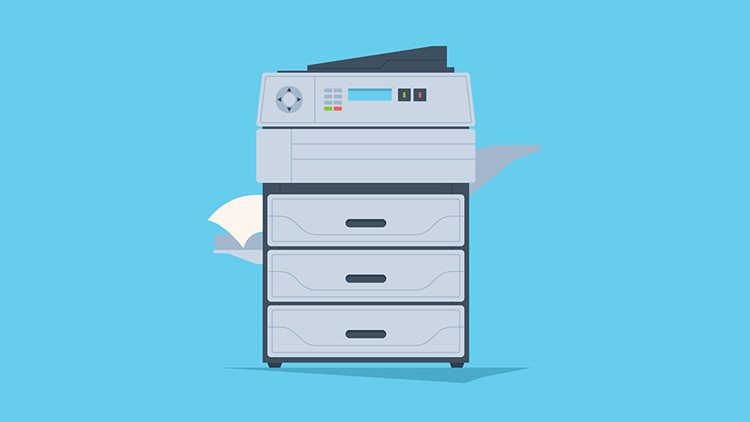by | Apr 19, 2023 | Tax Tips and News
After severe thunderstorms and tornadoes raked parts of Tennessee on March 31, many of Volunteer State taxpayers could use a little good news. The Internal Revenue Service is doing its part, announcing tax relief for storm victims.
The agency announced that taxpayers and businesses in the 10 hardest-hit counties have been given until July 31, 2023, to meet a number of filing and payment deadlines, including the following:
- April 18: income tax return filing and payment deadline
- April 18: quarterly estimated tax payment deadline
- April 30: quarterly payroll and excise tax return deadline
- June 15: quarterly estimated tax payment deadline
Further, the IRS says penalties on payroll or excise tax deposits due March 31 – April 18 will be abated as long as tax deposits are made by April 18.
Information on other returns qualifying for relief, payments delayed, and other details can be found on the Disaster Assistance and Emergency Relief for Individuals and Businesses page on the IRS website.

Which Tennessee counties are receiving this tax relief?
The expanded deadlines are available to taxpayers and businesses in the 10 Tennessee counties named in the federal disaster declaration:
- Cannon
- Hardeman
- Hardin
- Haywood
- Lewis
- Macon
- McNairy
- Rutherford
- Tipton
- Wayne
If any other counties are added to the disaster declaration, the IRS will automatically add them to the list of qualifying counties.
There is one caveat for those who want more time beyond the expanded July 31 deadline: extension requests from disaster-area taxpayers after April 18 and before July 31 can only be filed on paper. (See the “Extension of Time To File Your Tax Return” page on IRS.gov for more details.)
Do taxpayers need to do anything to receive this tax relief?
Taxpayers within the disaster area do not have to do anything to receive the IRS relief measures; when they file, IRS electronic systems will apply relief measures according to the address on the return. However, any tax return that claims a loss within the disaster area due to these storms should contain the FEMA declaration number: 4701-DR.
According to the IRS, those living outside the disaster area may still be able to qualify for this tax relief if “records necessary to meet a deadline occurring during the postponement period are located in the affected area,” or they are “workers assisting the relief activities who are affiliated with a recognized government or philanthropic organization.” Unlike residents who automatically receive relief, these taxpayers need to call the IRS: 866-562-5227.
Source: IR-2023-75
– Story provided by TaxingSubjects.com
by | Apr 10, 2023 | Tax Tips and News
The Internal Revenue Service has released its annual Dirty Dozen list of the top scams and schemes posing threats to taxpayers and tax pros, and this year sees some new schemes among the known scams from previous lists.
While not ranked by importance or enforcement priority, the list shows the lengths scammers, hackers, and other thieves will go to crack the cyber defenses of tax preparers and their clients.

The Dirty Dozen list is issued every year by the IRS and Security Summit, a group of IRS officials, state tax agency, and national tax industry partners. The Summit is aimed at identifying security threats and devising defense strategies against them.
Let’s get started.
Bogus Employee Retention Credit Claims
The Employee Retention Credit was created to help a specific type of business that continued to pay employees while the firm was shut down during the COVID-19 pandemic. The credit is not available to individuals.
Scammers, however, hawk the credit on TV, radio and the internet as a way for anyone—whether a business or an individual—to file and get a big payday from the government. In truth, many of these claims are built on bogus eligibility statements and payout estimates rooted more in wishful thinking than in reality.
The real danger, the Security Summit cautions, is these third-party filers charge fees for their “service,” leaving taxpayers in the lurch when they’re turned down for a credit they cannot get. Individuals should remember the IRS holds the taxpayer responsible if their return isn’t accurate.
Using Text or Email to Trick Tax Pros and Taxpayers
This is a perennial offender in the Dirty Dozen lists.
The format is simple: Scammers send emails or texts to tax professionals that appear to be from potential clients, or they may target taxpayers by posing as the IRS or some other official agency.
The point of these bogus communications is to get the target tax pro or taxpayer to divulge vital personal information such as a Social Security number, account login information or other details that could help the scammer steal the taxpayer’s identity.
These attacks come in two basic forms: phishing and smishing. Phishing is an email sent by scammers posing as some sort of official agency or business. The email may threaten the recipient if they don’t click a certain link or pay a bogus fee, or offer a non-existent tax refund.
Smishing uses a text or smartphone SMS message in lieu of an email, with the same purpose. Smishers sometimes send messages warning that your account has been locked, accompanied by a link to “solutions” that will allegedly fix the problem. Like phishing attempts, these will take the victim to a fake website where their information can be stolen or otherwise compromised.
Risks from either method are great for both tax professionals and taxpayers. Never click on any link in an email or text message that arrives unsolicited.
Bogus Offers of “Help” to Set Up Online Accounts
It sounds so innocent: an offer to help taxpayers set up their Online Account on the IRS website. But this comes from a No-Good Samaritan. It’s the work of an identity thief.
Setting up an Online Account with the IRS is a straightforward process, requiring no outside help to establish. The scammers frequently market themselves to the elderly and to taxpayers with a limited command of English.
The scammer’s “helpful” service hides the true goal of what appears to be a good deed: to steal a taxpayer’s personal information so the scammer can do his damage.
Once the cyberthief gets the taxpayer’s address, Social Security number or Individual Taxpayer Identification Number (ITIN), and photo identification, he can file fraudulent tax returns (all claiming huge refunds), obtain loans and open new credit accounts.
Making Fraudulent Fuel Tax Credit Claims
This one is a variation on a theme: Scammers convincing taxpayers to claim a credit they’re not qualified to receive.
In this case, it’s the Fuel Tax Credit, designed to refund fuel tax paid by farmers and other off-highway users. Scammers and promoters pitch a claim for the Fuel Tax Credit to regular taxpayers, when in reality, it’s simply not available to most taxpayers.
The scammer can make off with an inflated fee for suggesting the Fuel Tax Credit and possibly taxpayer information to help file a fraudulent tax return.
Using Fake Charities to Dupe Taxpayers
The world has experienced tragedy of epic proportions over the past few years. When there’s a disaster of any kind, whether earthquake, hurricane, or famine, thankfully some charity steps up to help the recovery effort.
But scammers have learned this and they invent fake charities to pose as legitimate humanitarian organizations so they can rake in public donations that simply go into the scammers’ pockets. Disaster victims, meanwhile are left to fend for themselves.
On top of the diverted donations, fake charities offer scammers the opportunity to pull in donors’ personal financial information, leaving donors vulnerable to identity theft for their good deed.
Beware “Ghost” Tax Preparers
This Dirty Dozen entry revolves around fly-by-night tax preparers who cut corners in order to get a higher fee from their clients. One of their tactics is to gauge their fees according to the size of the client’s claimed refund. Some of these preparers are called “ghosts,” because they refuse to sign the returns they prepare—or ask their clients to sign a blank return up front.
A ghost preparer may also ask for a cash-only payment but won’t give a receipt, create fake deductions to boost the size of the refund, or direct refunds into their bank account instead of the client’s bank account.
Taking Tax Advice Found on Social Media
Let’s face it: taxpayers are always looking for ways to increase the size of their tax refund. Unfortunately, many of these schemes can land folks in hot water with the IRS.
The agency says two scams have recently surfaced that got their attention. One involves common tax documents such as W-2s, while the other utilizes the more obscure Form 8944, which is usually used by a very limited group of tax filers. In both cases, the online proponents encouraged taxpayers to submit false information to get a refund.
As the old advice goes, if something sounds too good to be true—it probably is.
Tax Pros Are Vulnerable to Spearfishing Attacks
This scheme shows up in the tax professional’s email in-box all dressed up like a legitimate email from an official source—a state taxing agency, another tax firm, or even the IRS.
Problem is, it’s from a scammer.
The point of these ersatz emails is to trick the tax pro into divulging some of their clients’ personal financial information—or even their own, thinking they are communicating with a legitimate and trusted agency.
Spearfishing can be aimed at individual tax pros, or even whole payroll departments of businesses. The methods are the same no matter the scale.
Steer Clear of Offer in Compromise “Mills”
Some scammers advertise they can settle a taxpayer’s outstanding tax debt for pennies on the dollar, when in truth, taxpayers can do it themselves without anyone’s help.
These ads are a staple on radio and television, promoting how they got a taxpayer’s tax debt reduced to easy-to-pay monthly notes.
The scammers tout their success at negotiating with the IRS, but it’s actually all done through the agency’s Offer in Compromise, designed to help taxpayers who owe a large tax debt but don’t have the assets to pay.
No third party is required. Taxpayers can go online themselves to sign up for an OIC that sets a payment schedule for a significantly reduced tax debt amount.
Taxpayers promote their services aggressively, raking in up-front fees from taxpayers who don’t even meet the qualifications of the Offer in Compromise.
High-Income Filers Need to Think Twice
The IRS has a stern warning for wealthy taxpayers who are willing to go to any lengths to protect their bank accounts from the taxman: Resorting to illegal means to shield income can have serious consequences.
These complex schemes rely on tax shelters little-known to the average taxpayer. Whether a Charitable Remainder Annuity Trust (CRAT) or a Monetized Installment Sale, the promoter’s pitch is the same—a tax benefit that is greater than the law allows.
Taxpayers should remember that variants of these strategies have been named abusive tax avoidance schemes by the IRS.
Beware of Schemes That Abuse the Tax System
While the previous Dirty Dozen entry catered to the very wealthy, this set of pitfalls are more widely known. They are all familiar to the IRS as tax-avoidance schemes. All are promoted as ways to protect income from taxation, but when discovered, won’t protect the taxpayer from prosecution.
Two of these methods, micro-captive insurance arrangements and syndicated conservation easements, follow existing processes, but use deception in filing to inflate the benefits that protect income.
International Moves Enter Sketchy Territory
Some taxpayers rely on offshore accounts and digital assets to shield their funds from IRS scrutiny. If deception is involved, however, IRS agents take a closer look.
Another scheme has taxpayers depositing money into a so-called “pension fund” in Malta or some other foreign country. By claiming erroneous treaty provisions and improper exemptions from U.S. income tax, the scheme becomes abusive in the eyes of the IRS.
In both these examples and others known to auditors, willful deception and misstating income are seldom good strategies for filers.
Learn More About Protecting Taxpayer Data
The sheer number of scams threatening taxpayer data can seem daunting, but there are reliable educational resources available. “Keeping Taxpayer Data Secure” is a self-study course on DrakeCPE.com that covers the risks posed by cybercrime, data security best practices, and strategies for mitigating breaches.
Sources: IR-2023-49; IR-2023-51; IR-2023-54; IR-2023-55; IR-2023-57; IR-2023-59; IR-2023-61; IR-2023-62; IR-2023-63; IR-2023-65; IR-2023-67; IR-2023-71
– Story provided by TaxingSubjects.com
by | Apr 5, 2023 | Tax Tips and News
The Inflation Reduction Act of 2022 (IRA) updated the Clean Vehicle Credit to make US-manufactured electric and fuel cell vehicles more attractive to American car buyers. Since provisions in the legislation changed several qualifying requirements that take effect in 2023, the Internal Revenue Service has been steadily issuing guidance since January.
Last week, the IRS again announced new guidance, this time addressing the critical mineral and battery component requirements. This clarification includes regulations that will be published in the Federal Register on April 17 and updates to frequently asked questions (FAQs) on the IRS website.

Critical mineral and battery component requirements take effect April 18
The IRS says that “new clean vehicles placed in service on or after April 18, 2023, are subject to the critical mineral and battery component requirements even if the vehicle was ordered or purchased before April 18, 2023.” After this date, the maximum available credit of $7,500, will be split into two components:
- $3,750 for meeting critical mineral requirements
- $3,750 for meeting battery component requirements
For the purposes of determining eligibility for the credit, the IRS notes that “placed in service” means “the date the taxpayer takes delivery of the vehicle.”
A PDF of the official notice can be downloaded from the Federal Register.
FAQ changes documented in the new fact sheet
The IRS notes that Fact Sheet 2023-08 “updates FAQs related to new, previously owned, and qualified commercial clean vehicles,” including changes to the following topics:
- Topic A: Eligibility Rules for the New Clean Vehicle Credit
- Added question 11
- Updated questions 2, 3, 4, 5, 6, and 7
- Topic B: Income and Price Limitations for the New Clean Vehicle Credit
- Added question 2 (renumbered prior questions 2 through 10 to 3 through 11)
- Updated questions 1, 3, 7, 8, and 9
- Topic C: When the New Requirements Apply to the New Clean Vehicle Credit
- Added question 8 (renumbered prior question 8 to question 9)
- Updated questions 2, 4, 5, and 6
- Topic F: Claiming the Previously Owned Clean Vehicles Credit
- Topic G: Qualified Commercial Clean Vehicles Credit
While the agency considers FAQ updates the fastest method for providing taxpayers and tax professionals information, they should not be relied upon for determining precedent.
Want more information about the Clean Vehicle Credit?
For more information about the Clean Vehicle Credit, check out the following Taxing Subjects blogs:
To earn continuing professional education credits while learning about the Clean Vehicle Credit and other provisions included in the IRA, take the Inflation Reduction Act: Tax Implications self-study course on DrakeCPE.com.
Source: IR-2023-64
– Story provided by TaxingSubjects.com
by | Mar 27, 2023 | Tax Tips and News
The IRS recently published a tax tip explaining Form 1099-K, covering why taxpayers receive it, how to address incorrect forms, and recent updates to reporting rules. This update comes almost three weeks after reports emerged that some taxpayers received incorrect forms.

What is Form 1099-K?
The 1099-K is an information form detailing business transaction payments collected using payment cards and third-party settlement organizations. According to the IRS, the following list includes reasons why a taxpayer might receive the form:
- A business the taxpayer owns
- Self-employment
- Activities in the gig economy
- The sale of personal items and assets
Businesses that routinely accept fees via payment card or platforms like e-Bay, Venmo, and PayPal are used to seeing Forms 1099-K every year. However, the American Rescue Plan of 2021 significantly lowered the reporting threshold from $20,000 and 200 transactions to just $600. In other words, there will be a dramatic increase in the number of people who receive the form.
Why are some taxpayers incorrectly being sent Form 1099-K?
In December 2022, the Internal Revenue Service announced they are delaying implementation of the new 1099-K reporting threshold until tax year 2023—which would affect next year’s tax returns. Despite this development, news organizations are reporting that taxpayers are receiving forms this year, resulting in confusion ahead of the filing deadline.
For their part, the businesses sending forms to taxpayers who meet the updated ARP reporting threshold say they are trying to get a head start on identifying legitimate recipients. Unfortunately, taxpayers whose friends incorrectly coded money transfers as business transactions are seeing incorrect information on their 1099.
What should taxpayers do if they receive an incorrect Form 1099-K?
The IRS recommends that taxpayers who receive an incorrect Form 1099-K contact the issuing company as soon as possible. The agency outlines a few scenarios that could lead to an incorrect form:
- Some taxpayers may have received a Form 1099-K for the sale of personal items
- Form 1099-K may have been issued in error—such as for transactions between friends and family, or expense sharing
If the taxpayer and third-party settlement organization cannot resolve the issue, the IRS recommends reviewing Understanding Your Form 1099-K.
How can I learn more about helping clients with their 1099-K?
The Drake Software Education Team routinely produces free informational videos covering myriad topics, from Drake Tax tutorials to tax rules. The Form 1099K video explains how you can help clients improve voluntary tax compliance when reporting payment card and third-party network transactions.
Sources: IR-2022-226; IRS Tax Tip 2023-37; “Ticketmaster, PayPal, eBay are hassling customers to report sales amid IRS confusion,” TheHill.com
– Story provided by TaxingSubjects.com
by | Mar 25, 2023 | Tax Tips and News
Identity theft usually takes center stage during most tax-scam discussions. After all, so much of our personal and professional lives take place online in emails, texts, and direct messages—all of which are ripe targets for phishing attacks. However, not all identity threats are limited to inboxes.
The Internal Revenue Service began its 2023 Dirty Dozen campaign by warning taxpayers about a scam that is being spread through radio and online advertisements. Fraudsters are encouraging ineligible businesses to claim the Employee Retention Credit (ERC) by spreading incorrect eligibility requirements.

How does the ERC scam work?
Taxpayers are generally introduced to the scam in ads promoting easy ERC payouts. Once contacted, these third parties tend to either charge a significant upfront fee or collect a percentage from the employer’s refund—two tactics often utilized by scammers (like ghost preparers).
The scammers might use any of the following methods to convince employers to claim the credit:
- [Inaccurately] explain eligibility for and computation of the credit
- [Suggest] that all employers are eligible without evaluating an employer’s individual circumstances
- [Fail to] inform employers that they cannot claim the ERC on wages that were reported as payroll costs in obtaining Paycheck Protection Program loan forgiveness
In addition to causing a headache for legitimate tax professionals dealing with duped business clients, the ERC scam could result in penalties—civil and criminal—and identity theft.
What is the legitimate method for claiming the ERC?
The Employee Retention Credit was created to help qualifying businesses weather pandemic-related shutdowns from March 13, 2020, to December 31, 2021—providing refundable tax credits for continuing to pay employees or experiencing a reduction in gross receipts during that period. So, to claim the ERC, employers need to meet the following criteria:
For more information about credit eligibility, check out Notice 2021-20, Notice 2021-23, Notice 2021-49, Notice 2021-65, and Revenue Procedure 2021-33.
What should employers do if they were convinced to participate in the ERC scam?
The IRS suggests that employers who participated in the ERC scam should immediately file an amended return. The agency reminds that “taxpayers are always responsible for the information reported on their tax returns,” and “improperly claiming the ERC could result in taxpayers being required to repay the credit along with penalties and interest.”
Sources: IR-2023-49; IR-2022-183
– Story provided by TaxingSubjects.com
by | Mar 21, 2023 | Tax Tips and News
New technology could improve tax return processing time at the IRS
Paper returns have historically been slower to process due to the Internal Revenue Service having to manually transcribe information, leading taxpayers who want to more quickly receive their refund to electronically file. However, there could be a light at the end of the tunnel for those who either prefer or are required to file paper returns.
This year, the IRS launched the Digital Intake scanning initiative as part of its push to improve the service it provides to everyone, from taxpayers and businesses to members of the tax industry. As part of the initiative, the agency is deploying new scanning technology to more quickly convert scanned paper tax returns into digital files.

“The IRS has been using various technologies to scan tax returns for more than 35 years but recently took a leap forward by leveraging cutting-edge technologies via a revolutionary procurement approach to test their effectiveness,” the IRS explains. “The capabilities enable the IRS to digitalize more paper for downstream processing and storage, resulting in greater efficiencies and improved data management outcomes.”
Currently, the initiative involves Lockbox Financial Agent banks and contracted industry partners.
How is the Digital Intake initiative going?
The IRS says they have already scanned more than 120,000 Forms 940 since the year began: roughly twenty times more than all the documents scanned last year. As a result, they have also earmarked Forms 1040 and 941 for the initiative.
This early inclusion of individual income and employer quarterly tax forms could signal that the program will be successful. Ultimately, the shift to efficient, accurate digital conversion tools would facilitate electronic processing and storage for paper filings, reducing turnaround time for these returns.
IRS Chief Information Officer Nancy Sieger shared her optimism about the program: “technology powers tax administration, and we have completed important work over the last year to help people get the assistance they need and reduce paper, in addition to improving the agency’s underlying technology infrastructure. This is another positive step in the future technology direction for the IRS that includes improving service to taxpayers.”
Source: IR-2023-41
– Story provided by TaxingSubjects.com












